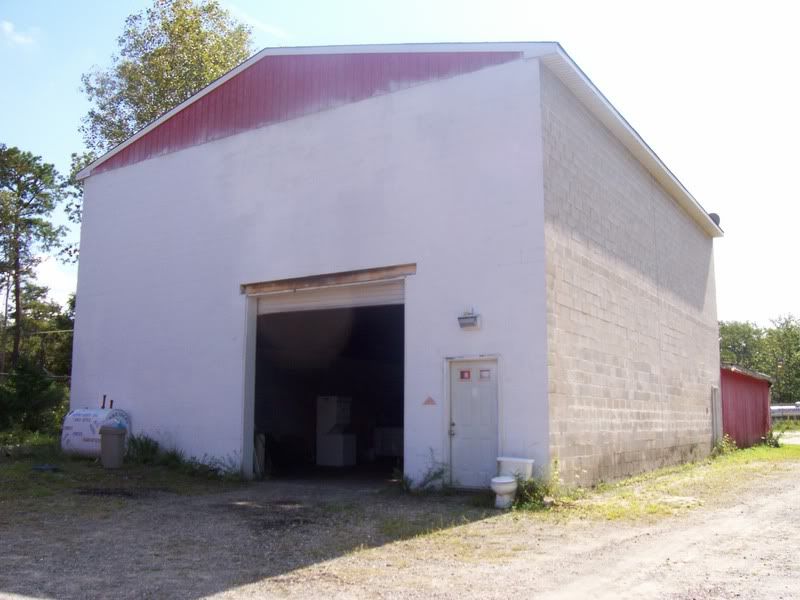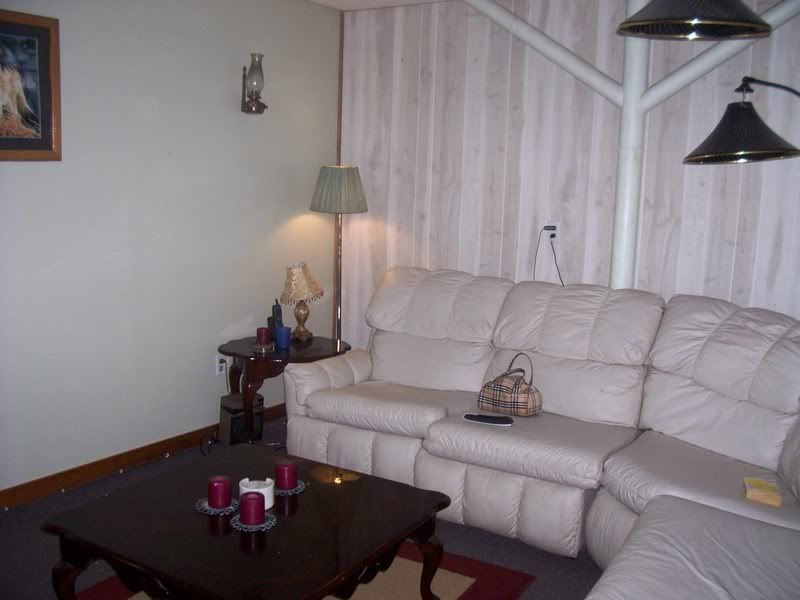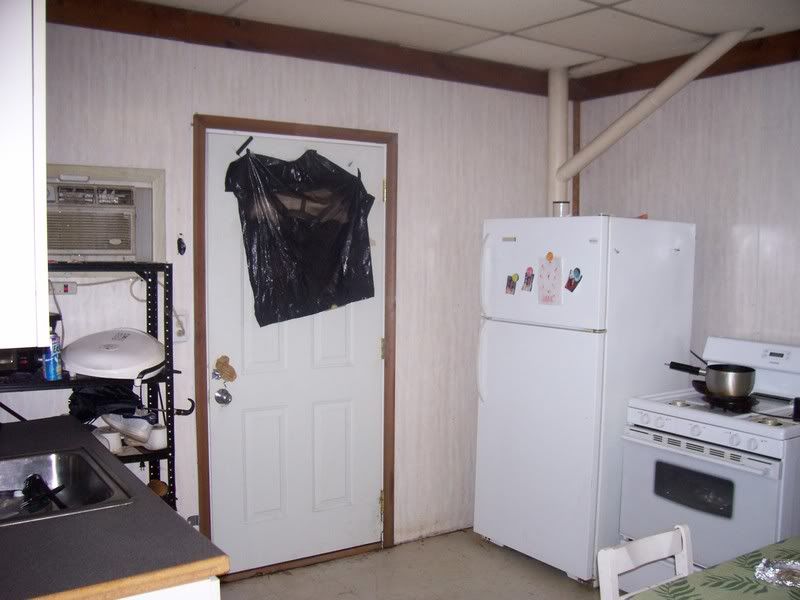|
|
Post by papacheese on Apr 28, 2008 15:55:10 GMT -5
It's an article of faith that commercial occupancies present a whole 'nother perspective on firefighting.....that the demands and challenges we face are nothing like your run-of-the-mill dwelling call, exciting as that can sometimes be.
What considerations must be made for a fire in a store or office building? Tactically, what are the challenges? Any particualr hazards we need to factor in when making our initial call?
Again, let's get some discussion going...are they different than a regular dwelling fire? If so, why...and what should we do differently?
|
|
|
|
Post by cmcollier on Apr 28, 2008 20:02:43 GMT -5
Wow, this is a very in depth topic. Entire books could be dedicated to comparing and contrasting commercial and residential buildings. To me the two biggest differences between the two would have to be size and construction.
First, the size difference is obvious. These structures can range from a small convenience store to a several hundred thousand square foot building. In residential occupancies almost all rooms have windows, in commercial occupancies you can be hundreds of feet from a window or door. For this reason, search ropes are essential when operating in these structures unless you are on a hose line. Air management is also a huge concern. The first due or even first few companies may not make it to the seat of the fire due to running out of air just to get there. Length of hose stretches is also a concern. How long is your longest preconnect? Do you ever train on extended hose stretches? What do you do if one of your preconnects does not reach the fire? You may need multiple FAST trucks for a large building. The first FAST truck may locate the downed member and then have the second remove the member due to air limitations. Security in these occupancies is also usually much tougher than in a residential occupancy. You may need to special call additional truck companies to get all of the doors or roll down gates opened up for proper entry and more importantly egress.
Now on to construction. The biggest difference I see is that normally residential buildings are of combustible construction and commercial buildings are of non-combustible construction. You are far more likely to have a structural fire in a residential building than in a commercial building for that reason. Commercial buildings are normally contents fires, that does not make them any less hazardous though. In residential occupancies structural failure can occur from structural members burning away or becoming weakened from heat such as warping gusset plates and engineered lumber delaminating. In commercial buildings structural failure can be caused by warping metal structural members from heat or spalling concrete structural members. Fortunately, many commercial occupancies have auxiliary fire protection systems such as fire alarm systems, sprinkler systems, standpipe systems, or special agent systems which will provide early notification of a fire and assist in quick extinguishment. Egress corridors and stairways in most commercial occupancies are required to be of some type of fire resistive construction to allow for safe egress. Open interior stairways such as those found in residential occupancies are extremely dangerous.
Those are the two biggest differences I can think of off the top of my head. They are definitely not the only differences, just the two biggest I can think of. 2 and 1/2 hose lines should be used in commercial occupancies 100% of the time.
|
|
|
|
Post by papacheese on Apr 29, 2008 6:42:24 GMT -5
Great post.....thanks, Chris...you hit the key points
|
|
|
|
Post by voyager9 on Apr 29, 2008 6:59:17 GMT -5
I think there are so many variations to a "Commercial Building" that we must categorize them further before any specific concerns, considerations, or tactics can be discussed. Everything from a small Wawa/McDonald's to 6-story office building, to large industrial sprawl is considered "Commercial" and the tactics are vastly different.
To add to Chris' comments:
In addition to size and construction, building layout is a huge concern. With a residential building you can almost "guess" the layout based on size/location of doors and windows. No such luck with commercial buildings. You could have anything and everything from manufacturing to computer rooms to cube farms. Just look at Lockheed Martin in 31 as an extreme but hardly unique, example. Last week it was a hallway, this week its cubes, next week its sharks with laser beams..
The good news is that Commercial buildings have to be inspected so I would hope that ensures they meet code. It also allows the FI's to get in there and draw up preplans..etc.
When in doubt:
Pull the 2.5
Grab the search rope
Pull the next alarm
RIT on each Division
|
|
|
|
Post by cmcollier on Apr 30, 2008 17:24:10 GMT -5
The good news is that Commercial buildings have to be inspected so I would hope that ensures they meet code. It also allows the FI's to get in there and draw up preplans..etc. Yes, theoreticaly. Fire inspections are an extremely valuable and often under appreciated tool. How well the fire protection systems, means of egress, and other fire protection features are maintained in the building is dependent on the fire inspector. I did fire inspections in North Wildwood for a year and for the State Fire Marshal's Office for a year and a half, so I have a little experience to base my opinion on. Unfortunately, from what I have seen anyway, fire inspections and fire inspector's knowledge is somewhat lacking. As with most other people in the fire service fire inspectors want to do a good job. They don't do things wrong intentionally. I believe most things they miss are due to a lack of education which is mostly not their fault. They would probably take a class a week if they were allowed, but very few boss's and employers will allow that. In my 2 and a half years of doing inspections I can count on one hand the number of times I did an inspection and left without issuing any violations. The best advice I ever received as a fire inspector was from my dad. He said, "If it looks wrong, it probably is." Every time I looked at something and thought it looked weird and then went and looked it up, sure enough it was wrong. Sometimes fire inspectors just miss things too. Whenever I did an inspection and the building representative said that the inspector before me never said anything I always asked them, " did you ever go fishing?" and when they said yes i then asked "did you catch all the fish?" The point is you can't catch everything all of the time. If you are on a run and see something that looks wrong, relay the info to your officer and have them initiate the process to have an inspector follow up. One last piece of advise for firefighters or officers about answering fire inspection or code questions. If you are not 100 % sure of the answer to the question you are asked, say you don't know and will find out or have the appropriate person contact them. It is very difficult to explain to a business owner that the answer given to them by another member of the fire dept is wrong and they will try to hold you to the answer they like better. Also, it just makes us look bad when we contradict each other. Wow, i got kind of off track of this thread. Must run in the family, i can make a short story long. |
|
|
|
Post by shader101 on May 1, 2008 8:18:00 GMT -5
maybe if there is enough interested, the WEBBOSS can make a spot on here for FM's,FO's, & FI's, could prove to be interesting, dealing with JQ public is never dull
|
|
|
|
Post by WebBoss on May 1, 2008 8:26:56 GMT -5
maybe if there is enough interested, the WEBBOSS can make a spot on here for FM's,FO's, & FI's, could prove to be interesting, dealing with JQ public is never dull Is that a hint??? Is there enough interest for that?? Anyone?? Bueller... Bueller... |
|
|
|
Post by voyager9 on May 1, 2008 8:36:21 GMT -5
Wow, i got kind of off track of this thread. Must run in the family, i can make a short story long. LOL! No way, you don't have enough radios hanging off your strap. |
|
|
|
Post by FirstDue312 on May 1, 2008 8:42:16 GMT -5
Something else very prevalent in Commercial Occupancies is the propensity for drop ceilings. Warehouses that are used as office buildings with cubicles, Lockheed Martin in the 31, Malls and Department stores, and the wiring that goes above them. I know for a fact that Lockheed Martin never removes any old wiring that has become outdated, whether it be electrical or telephone or cable wires. Their facility in Moorestown is converting more towards offices instead of R&D, thus old warehouse space is now turning into cubicle country with wires above ceiling tire or high vaulted ceilings that are hidden by that tile. Metal trusses could expand and the fire could be ROCKING above you and you'd never know it and be in dire straits with a possible structural collapse looming. All in all, drop ceiling plus wires in = HELL in the event of collapse
|
|
|
|
Post by papacheese on May 1, 2008 13:54:26 GMT -5
[/quote] One last piece of advise for firefighters or officers about answering fire inspection or code questions. If you are not 100 % sure of the answer to the question you are asked, say you don't know and will find out or have the appropriate person contact them.[/quote]
I second that motion....misinformation is sometimes worse than no information...
|
|
|
|
Post by cmcollier on May 1, 2008 21:32:46 GMT -5
maybe if there is enough interested, the WEBBOSS can make a spot on here for FM's,FO's, & FI's, could prove to be interesting, dealing with JQ public is never dull Is that a hint??? Is there enough interest for that?? Anyone?? Bueller... Bueller... I think its a good idea. I took a ton of pictures when I did inspections which I still have that I could post. You would be surprised when you start learning how and why codes are applied and why things must be a certain way how much better of a firefighter it will make you. |
|
|
|
Post by shader101 on May 12, 2008 14:02:01 GMT -5
hey papa cheeze it " i don't know gene is removed when issued a White hat" lol
|
|
|
|
Post by cmcollier on May 12, 2008 14:51:33 GMT -5
 What would you expect to find in a commercial occupancy like this? I have more pictures of the inside to post after you create your initial opinion. |
|
|
|
Post by thelurker on May 12, 2008 15:35:00 GMT -5
I am expecting either auto repair or a paint booth...or both, and plenty of flammable liquids storage. Nice stack washing machine for those dirty shop rags and stuff.
|
|
hp4l
Division Supervisor  Remember Your Roots
Remember Your Roots
Posts: 600
|
Post by hp4l on May 12, 2008 17:40:33 GMT -5
Gotta agree with Dean. Something to think about though is where are you? This building could be used for something completely different in Chatsworth then it would be in Delran just to throw 2 different towns out there. Think really big shed. Who knows what is in here and that is the worst thing you can find. Guaruntee its nothing good for us though. I do like the toilet by the door.
|
|
|
|
Post by cmcollier on May 12, 2008 19:01:59 GMT -5
I thought the same thing... until I went inside. I was expecting to find a repair shop or just storage; wrong!    I was completely shocked to find an occupied illegal apartment. In the first picture I posted you can see a small red setback off the rear of the building. That is the part that was illegally converted to an apartment. The front part was junk storage. My point with these pictures is that you may think their is no life hazard in a building like this in the middle of the night, but their may be. |
|
|
|
Post by thelurker on May 16, 2008 6:01:06 GMT -5
Gotta admit, I didn't see that one coming.
|
|
|
|
Post by papacheese on May 16, 2008 9:39:22 GMT -5
<shaking my head> neither did I. Visions of methyl-ethyl bad stuff were dancing through my noggin, certainly not an apartment. It would be even worse if you made the strategic decision not to aggressively search the place due to it's apparent use and involvment. Great post!
|
|
|
|
Post by cmcollier on May 16, 2008 18:38:01 GMT -5
By the way, this is in Burlington County. It is in 181's first due. The last time I was there which was about a year ago no one was living in the apartment but it was still there. I imagine as soon as I left they moved someone new in.
|
|
|
|
Post by thelurker on May 16, 2008 19:36:06 GMT -5
Yep, we have at least one like this in Cinn City too. Right on Rt. 130. They can probably look out the window and see the engine leaving quarters.
|
|